Stroom Invest interview / artist Biba Cole
Artist, performer, musician, filmmaker, painter, and writer, Biba Cole (UK) is all in one. You can see her artworks and projects as one grand collage. All our senses are stimulated after seeing her interdisciplinary performances. In her art practice, Biba gives value to failure.
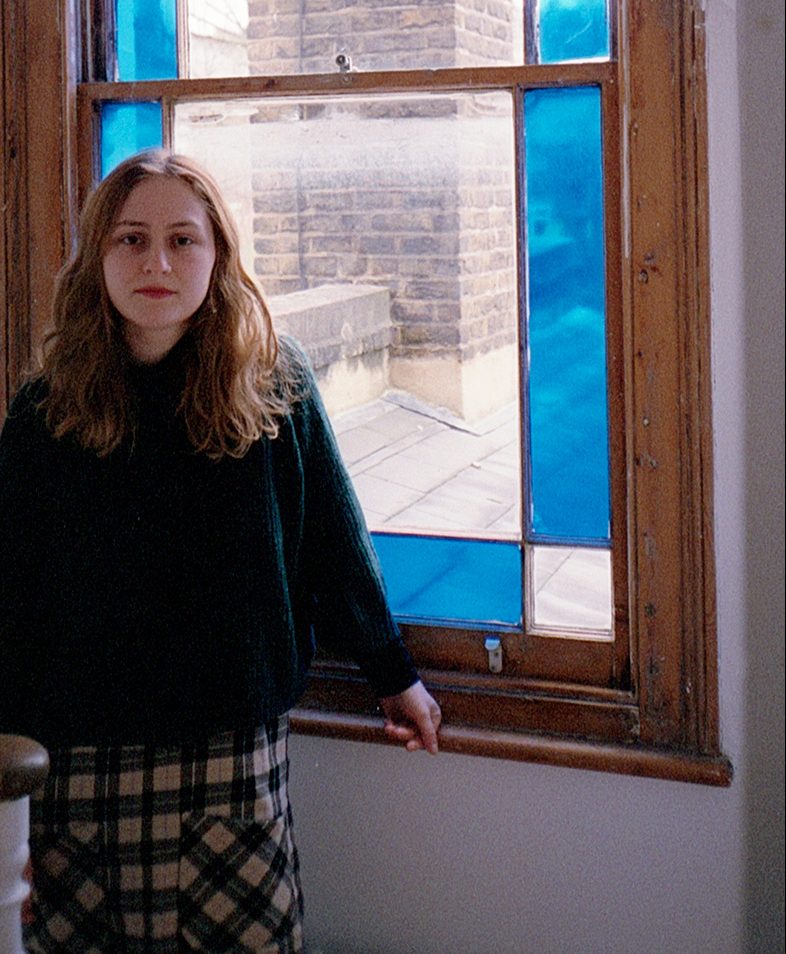
As an interdisciplinary artist and musician, do you always combine mediums?
Yes, but most of my works end up as a film. However, that always includes painting, writing, performance, and music. I’m trying to keep it open, so it’s more of a collection of stuff created in a space rather than just on a screen. All the mediums I use come together as one thing in the end. I’m always kind of working on everything at once.
What draws you towards working with these diverse mediums?
I’ve always done music, starting as a child, and after that, I studied music school. Furthermore, I think the material combination of everything together interests me the most, where they all meet in the middle. I’m not entirely sure what draws me to it, but my practice revolves around how my body interacts with these mediums. It is about the act of performance with these materials and how I can recreate that on the screen. Eventually, everything is hand-collaged on the screen.
Can you tell us a bit about your background?
Before the KABK I did a Fine Art bachelor at Lancaster University. Then I moved to the Hague and did my master’s straight after. I started the artistic research master at the KABK which brought together my writing and my art practice. A lot of the writing I did for my thesis fed my performances afterward. It went back and forth, and half of the writing is now also put into action. It was an interesting experience for me to bring the two together.

How do new ideas come to you?
I think most of my ideas just come from experiencing or seeing something. For example, the project that I sent you the videos of, Pulp of the Sea, started with the idea of falling over or slipping, or making a mistake and then bringing that into a positive light. A lot of my bodily experiences drive my ideas in the beginning. Often, I start with writing in the form of poems. Then I respond to stuff that I read, and after that, I develop it into a script for a performance. Also, I start painting the environments in which I imagine the performance to take place in. And then all the while I’m working on the sound stuff at the same time. So, it’s all interlinked that way.
You use a lot of self-defined terminologies and expressions in your work, is language leading in your process?
Perhaps it is rather a lack of language. I am always trying to figure out a way to articulate things that I felt. When I was doing the practice about falling and balancing, I found that there was a lack of language that I could use. Especially in my thesis I used specific words from other practices. I was looking for surfing terminology which explores ‘falling’ and how people will articulate the in-between moments of motion. But also making the film creates the language itself. I am looking at how we produce language and how we have a hunger for information. The body that acts in my films takes that information in and then regurgitates it. It is to some extent this constant cycle of eating and regurgitating language and information.
With all this spilling, falling, and failures it seems that you are always looking for imperfections?
Yes, I think so. Or maybe I’m looking for actions that are not considered productive in some way. At the moment, I’m working on a piece that’s broadly about sidetracking or wandering into something in order to realize why you were there in the first place; to situate yourself in some way by falling over. I think that is the broad element of my work, situating your body in a landscape.
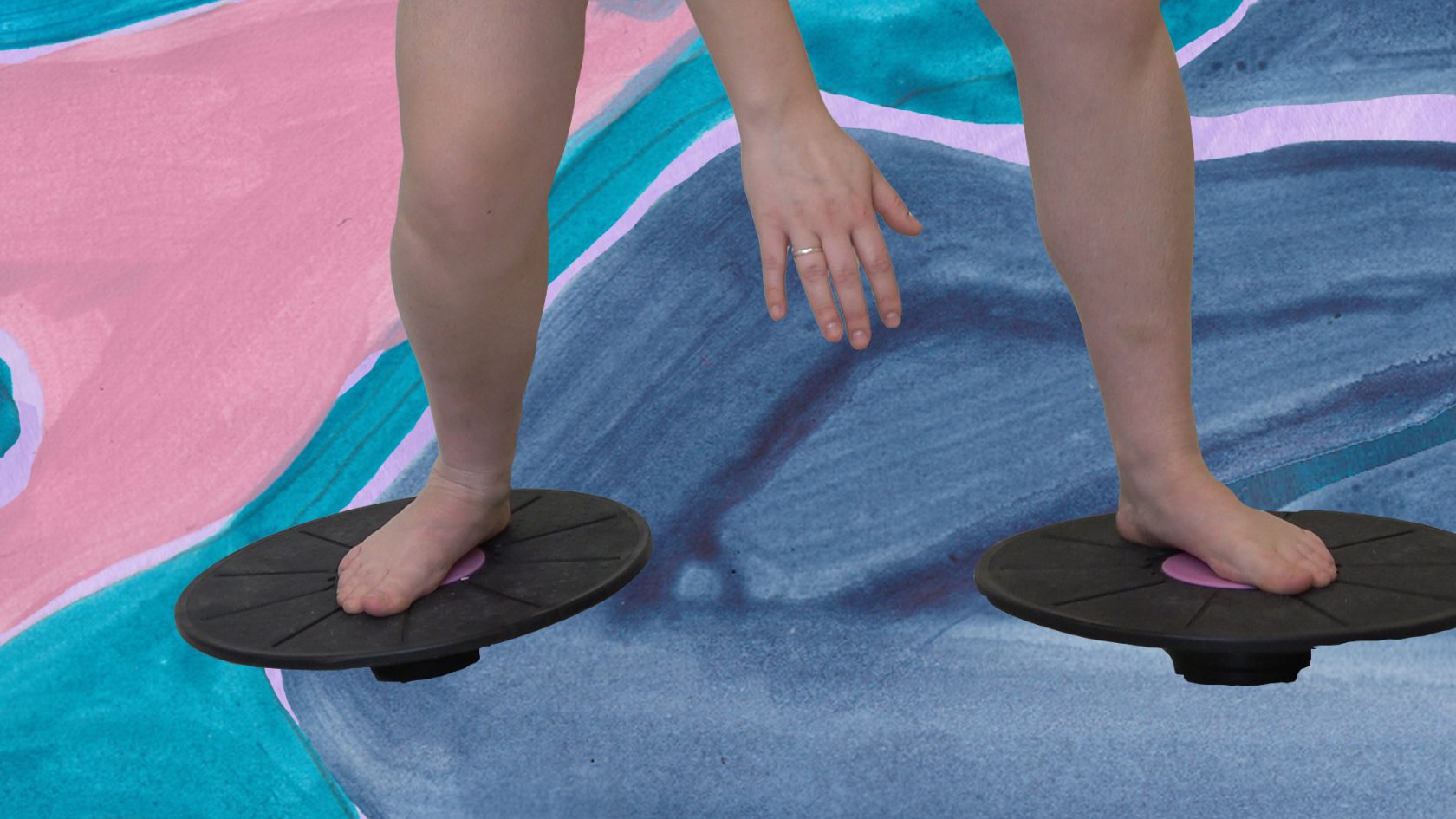
Water and fluids play an important part in your artworks and projects. It looks like these fluids are often dripping, spilling, leaking, and overflowing? What is your fascination with it?
Just like our body and water, writing is a similar sort of vessel that holds something and keep things (words) in. But then, there are these moments where it just always spills over. It is like when people try to hide all these tiny little mistakes they might make, it cannot hold. When I’m doing the hand-cut animations, all the excess material around the body or around the fluids that I’m cutting out are included. I’m making like a thousand frames by hand, all these little mistakes are then accumulated into one visual language. I think it is quite an interesting thing that happens when I cut out such fluid materials with such a rigid way of cutting because it then makes it awkward and clumsy.
What do you mean by ‘hydrofeminism’ and how is it incorporated into your work?
I think it was most prominent in my writing. It wrote about the text the Bodies of water by Dr. Astrida Neimanis. I was talking about that text concerning the practice of surfing. Also, I brought it in relation to another book called Lexicon of the Mouth by Brandon LaBelle. I would say that I was using the term for the idea that we are all bodies of water, and we help each other. We think and write with each other as a collaboration. Also, a lot of the writing that I did was written in and around water. I was kind of situating myself within the water itself.
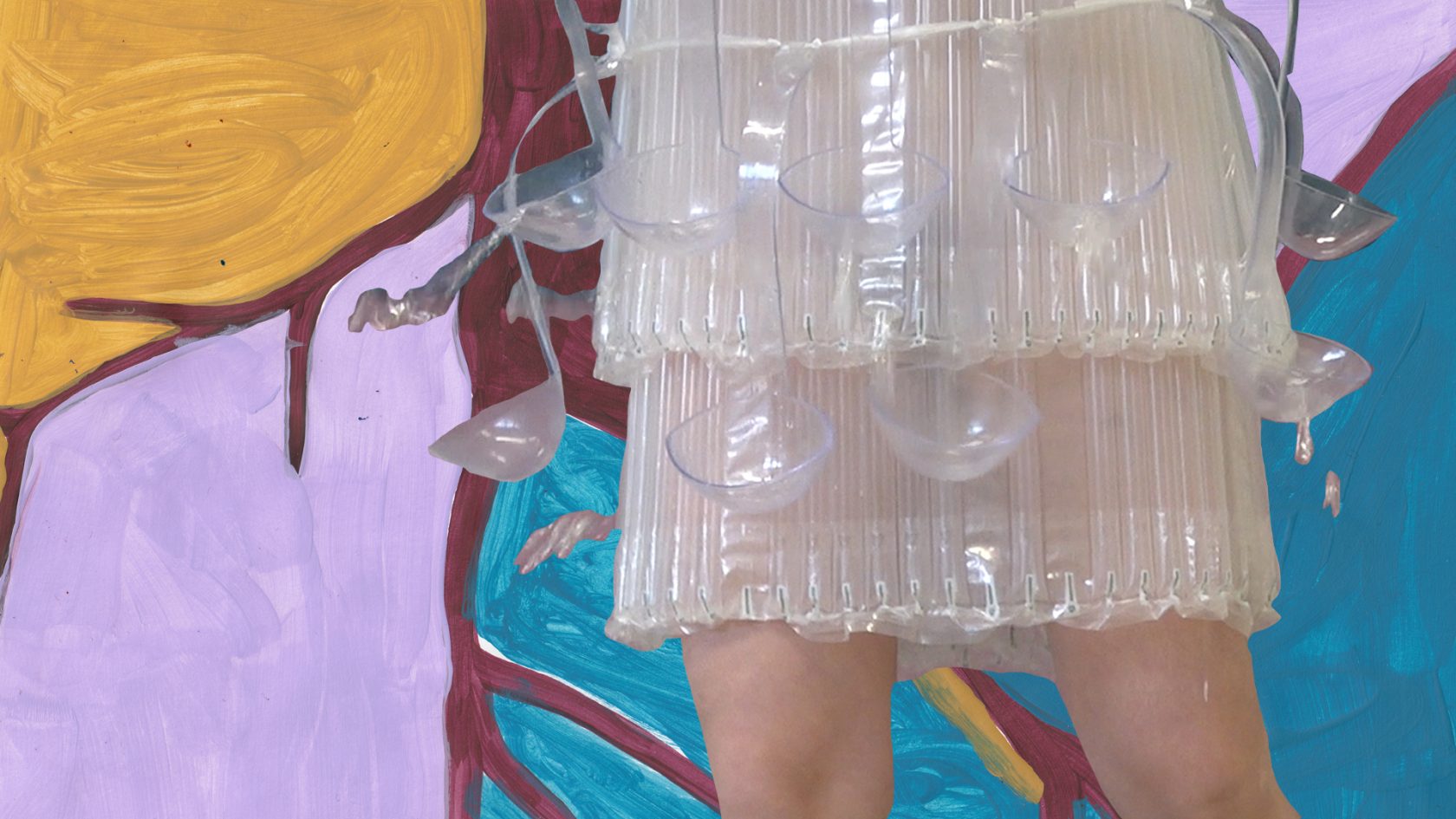
Coming back to this awkwardness or clumsiness you described earlier. Is that something you are looking for, to make your audience a bit uncomfortable?
I think it is something that kind of naturally happens. In most of my practice, I’m practicing making mistakes. If you take this practice and mistakes so seriously, it becomes somehow awkward and funny. That kind of humour is almost always incorporated into my framework. It becomes funny because we don’t see these mistakes that often. The way that the viewer interacts with it is interesting. For example, the audience during the Pulp of the sea performance was quite close to the moving screen. As I was performing, you could see my body getting tired. I did the performance maybe four times in a row for one exhibition. By the end, I hadn’t fallen at all but suddenly I just fell. It became the scene that I didn’t expect to happen. The question ‘is she going to fall’, drove the suspense of the performance; the tension of watching the balancing. Maybe it is a bit uncomfortable to watch that tiredness happening as well.
What is most important for you to give your audience during a performance?
Especially in Pulp of the sea I wanted to see how the audience moved with me. For one of the exhibitions, I had these exercise balls for them to sit on. I wanted them to sort of move with the viewing of the performance. I was thinking about how it felt to stand on solid ground as I was balancing above the ground. How does it feel to be an audience member in that situation of watching the film? There are multiple ways that I can approach showing the films to the audience, which is quite exciting. You can watch it literally on the screen or move with it. I want to play with how the audience moves.
Do you rather perform for an audience or a camera?
It is funny because it doesn’t feel the same at all. Me working on a film, because I’ve done it for so long, feels like a completely different thing. It feels like I’m just painting, making things in my studio. They’re two completely different mediums to me, and I enjoy doing both. But I would be interested in doing more live performances, especially through sound. When I started to perform, before everything shut down because of covid, I started to do some sound stuff. For example, I did a performance where I was balancing whilst playing the trumpet, and of course, I automatically slipped, which is interesting to do live. I want to explore that more.
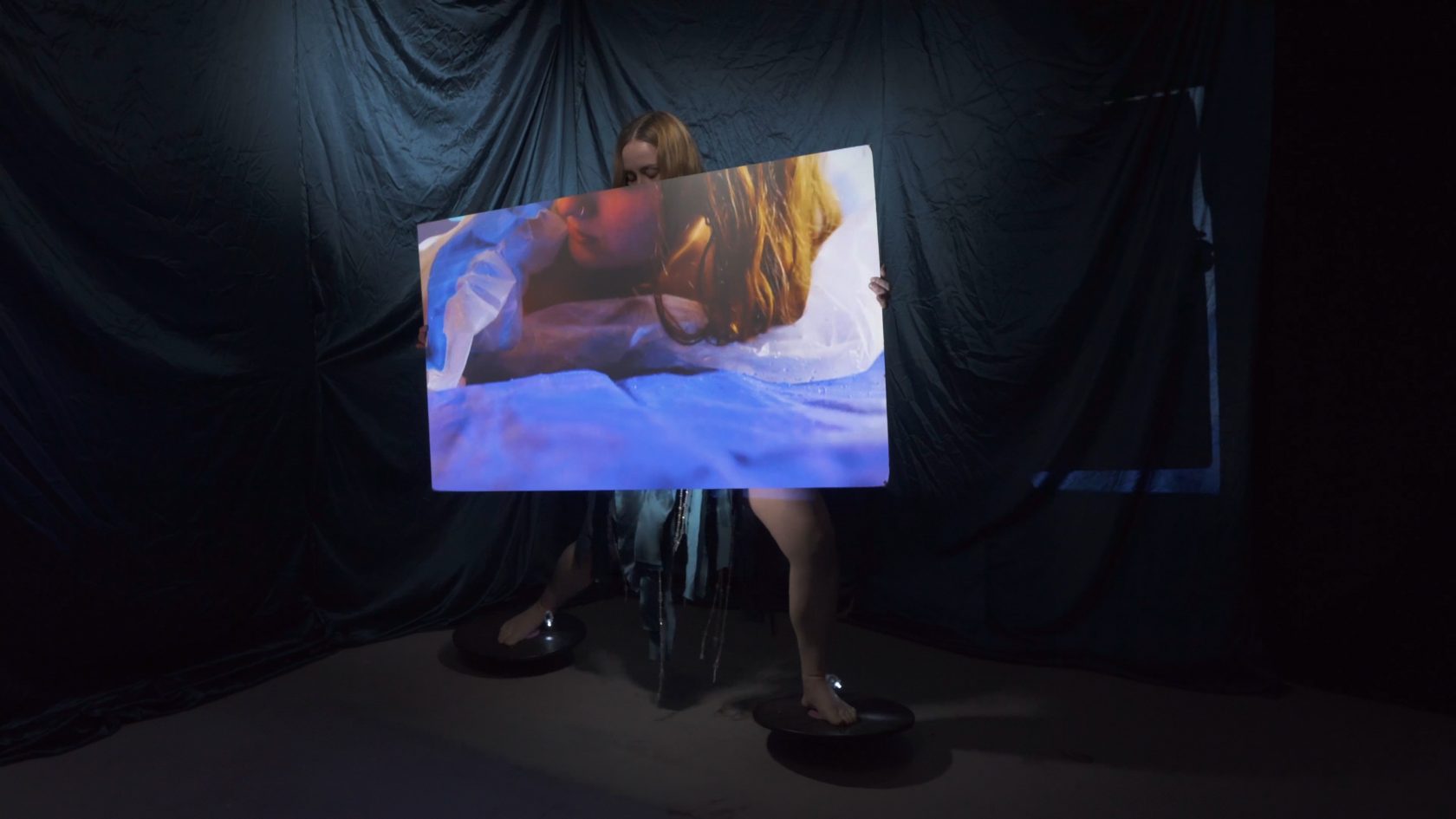
How important is taking risk in your own life and in your artistic practice
Very important. The performance part behind the camera is very much risk taking and the performing in front of audiences also. But the animation part is more like very intense computer work. I think all the actions and risks takes part outside of the production stage. It is important because half of the stuff which happens live, would not have been if I had done it in my studio.
Sound, space, and surroundings, how do they come together in your art?
I usually work with just one soundtrack per project. Now, I am expanding. I’ve been thinking about having more of a collection of visuals and sounds that may overlap in one space. But they overlap at different points. I’m always working on sound, even if there are no visuals yet. Bringing these sounds into the performance is a whole other thing. I’m working on bringing them together. I think it will end up as something which is both live and works as an installation; a collection of materials. But it comes together in collaborations with other artists as well.
Can you tell us about these collaborations?
I often worked with an artist based in London called one-four. We did our last soundtrack together and then also worked with other musicians. We’re always working together, so I’m sure there will probably be some new stuff soon. It is interesting because we work together from a distance. We send recordings back and forth and work on it. We’ve worked together for quite a long time, so we know each other’s working process well by now.
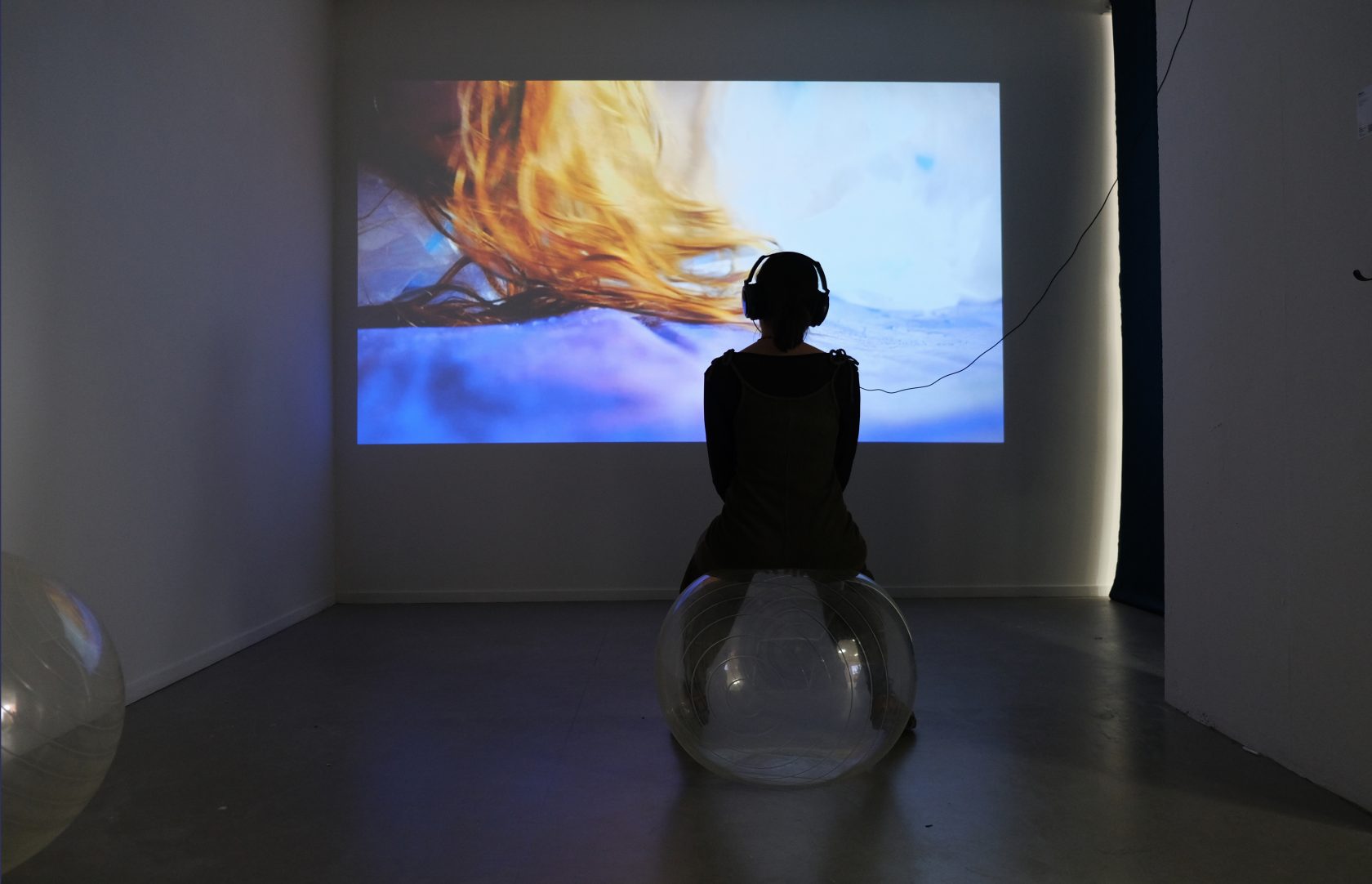
What is the ideal space for a sound piece?
I would like to do something that is outside. I don’t know how that would relate, because a lot of my sound works are very resonant and have a lot of reverberation in touch with the space. But I would be interested in doing something which, for example, would interact with water or the sound of nature, which actually comes from nature. I get a lot of field recordings from outside anyway. So I wonder how that would be.
What are you working on right now?
I’m working on another film. I’m doing a lot of painting and basically just figuring out new ways of animating because I have a lot more material and possibilities now. I’m working out new techniques for how to animate this new film. It’s generally surrounding the idea of sidetracking or acts of wandering and the precipice between land and sea and water.
Stroom Invest Week is an annual 4-day program for artists who were granted the PRO Invest subsidy. This subsidy supports young artists based in The Hague to develop their artistic practice so that artists and graduates of the art academy can continue to live and work in The Hague. To give the artists extra incentive, Stroom organises this week consisting of studio visits, presentations and several informal meetings. The intent is to broaden the visibility of artists from The Hague through future exhibitions, presentations and exchange programs. Stroom Invest Week 2022 will take place from 7 to 10th of June.